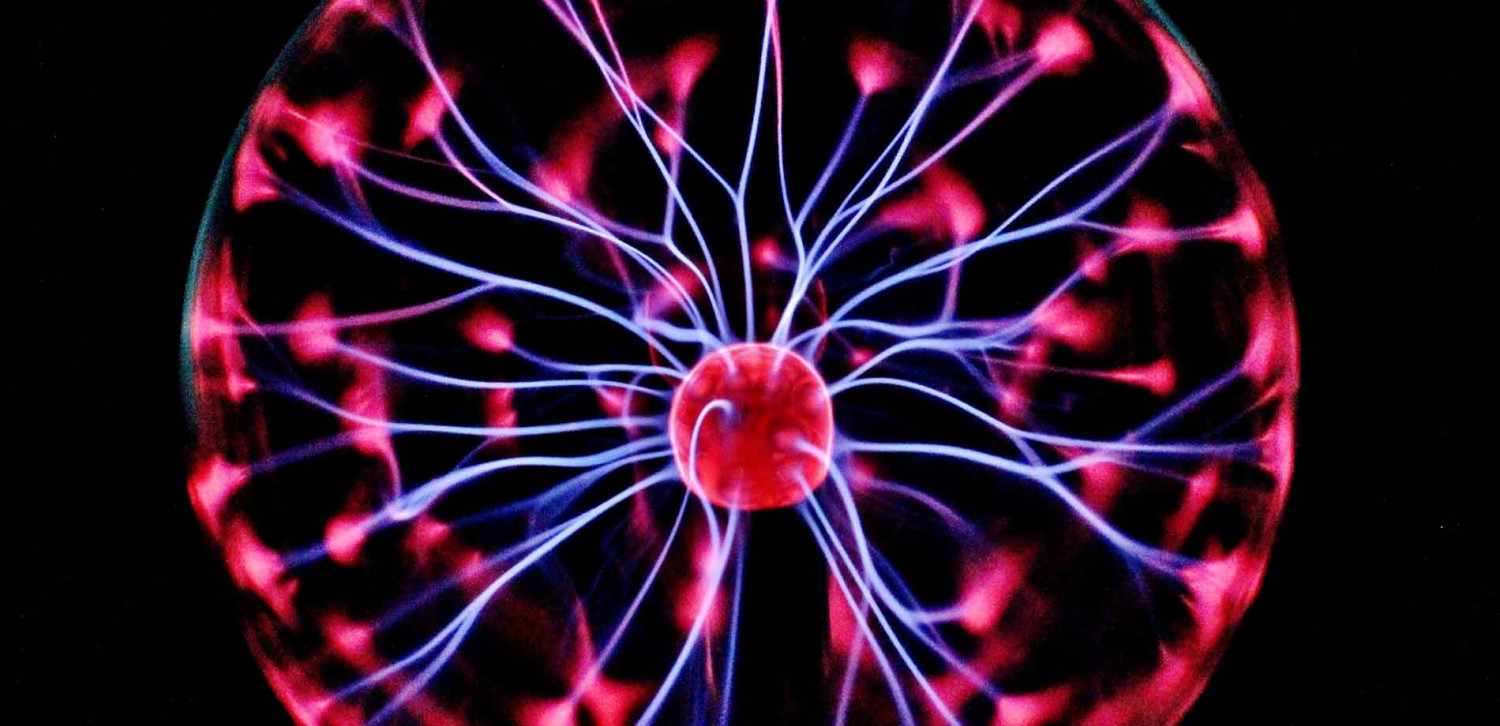

Plasma Globe & Columns
Plasma is one of four fundamental states of matter, created by heating a gas or subjecting gas to a strong electromagnetic field. Plasma globes can be used to study high voltages and electric fields. The human body can act as a conductor, serving as a path through which electricity can flow.
The glass is filled with a mixture of various noble gases, commonly neon, argon, xenon, or krypton. A very high voltage is created by a Tesla coil-like circuit setting up a high electric eld between a central electrode and the inner glass. The electrode at the center of the plasma ball emits a high-frequency, high-voltage alternating electrical current. This current flows through the plasma laments to create colorful tendrils of light. The color depends on the gases used.
When you touch the glass, you create a discharge path with less resistance than the surrounding glass and gases. This occurs because of the conductive properties of the human body. The plasma globe can be used to demonstrate that an electric eld can be diverted to a grounded short circuit if a second person touches the glass, reinforcing the idea that the body can be a path through which electricity can flow.
Turbulent Orb
Spin the sudsy, liquid- filled sculpture that mimics the Coriolis effect, which causes swirling clouds above Earth's surface and the bands of color on gaseous planets like Jupiter and Saturn. By rotating the sphere slowly, the fluid flows in smooth, orderly currents called laminar flow. With more rapid spinning, the currents become more complex causing disorderly swirls and eddies, a pattern called turbulent flow.
Virtual Aquarium
Most museums or aquariums would frown upon visitors disturbing the fish, but we encourage our visitors to tap on the glass. The fish in our virtual aquarium will respond due to vibration sensors connected to the glass and computer software and programming that powers the game. The responses range from curiosity to fight or flight. There is even a Moray Eel lurking at the bottom waiting to surprise unsuspecting visitors.
The Virtual Aquarium was created with the same technology used in popular multi-player video games. Computer animators first created 3D models of the individual fish using special so ware, then overlaid the models with realistic colors, patterns, and textures. Software engineers used a mathematical equation to animate the fish, mimicking natural movements and swimming patterns.
